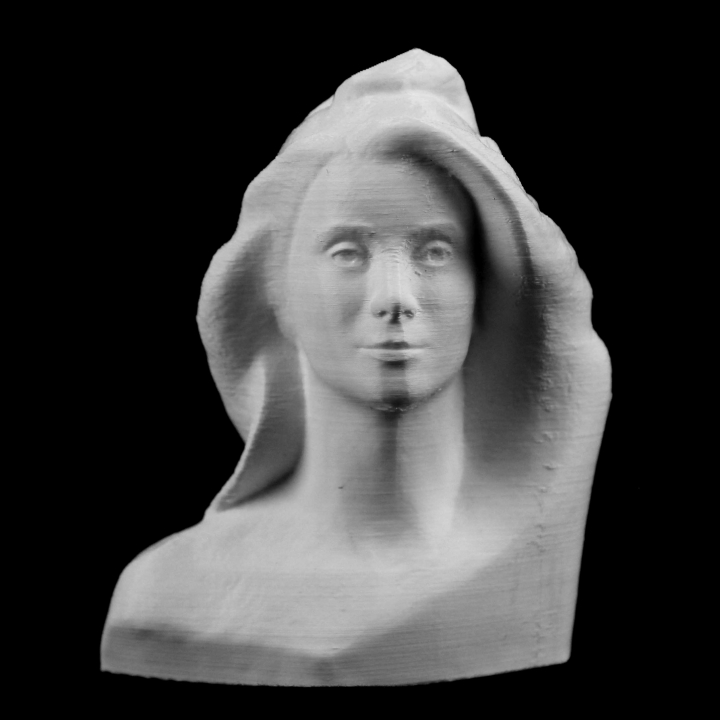
Bust of Marianne (Catherine Deneuve) at The Réunion des Musées Nationaux, Paris
myminifactory
This bust of Marianne was sculpted by Mireille Polska circa 1986 depicting French actress Catherine Deneuve. Marianne is a national symbol of the French Republic, an allegory of liberty and reason, and a portrayal of the Goddess of Liberty. Marianne is displayed in many places in France and holds a place of honour in town halls and law courts. She symbolizes the "Triumph of the Republic", a bronze sculpture overlooking the Place de la Nation in Paris. Her profile stands out on the official government logo of the country, is engraved on French euro coins and appears on French postage stamps; it also was featured on the former franc currency. Marianne is one of the most prominent symbols of the French Republic, and is officially used on most government documents. Marianne is a significant republican symbol, opposed to monarchy, and an icon of freedom and democracy against all forms of dictatorship. Other national symbols of France include the tricolor flag, the national mottoLiberté, Égalité, Fraternité, the national anthem La Marseillaise, as well as the coat of arms and the official Great Seal of France. In classical times it was common to represent ideas and abstract entities by gods, goddesses and allegorical personifications. Less common during the Middle Ages, this practice resurfaced during the Renaissance. During the French Revolution of 1789, many allegorical personifications of 'Liberty' and 'Reason' appeared. These two figures finally merged into one: a female figure, shown either sitting or standing, and accompanied by various attributes, including the tricolor cockade and the Phrygian cap. This woman typically symbolised Liberty, Reason, the Nation, the Homeland, the civic virtues of the Republic. (Compare the Statue of Liberty, created by a French artist, with a copy in both Paris and Saint-Étienne.) In September 1792, the National Convention decided by decree that the new seal of the state would represent a standing woman holding a spear with a Phrygian cap held aloft on top of it. Historian Maurice Agulhon, who in several well-known works set out on a detailed investigation to discover the origins of Marianne, suggests that it is the traditions and mentality of the French that led to the use of a woman to represent the Republic. A feminine allegory was also a manner to symbolise the breaking with the old monarchy headed by kings, and promote modern republican ideology. Even before the French Revolution, the Kingdom of France was embodied in masculine figures, as depicted in certain ceilings of Palace of Versailles. Furthermore, France and the Republic themselves are, in French, feminine nouns (la France, la République), as are the French nouns for liberty (fr:Liberté) and reason (fr:Raison). This object is part of "Scan The World". Scan the World is a non-profit initiative introduced by MyMiniFactory, through which we are creating a digital archive of fully 3D printable sculptures, artworks and landmarks from across the globe for the public to access for free. Scan the World is an open source, community effort, if you have interesting items around you and would like to contribute, email stw@myminifactory.com to find out how you can help.
With this file you will be able to print Bust of Marianne (Catherine Deneuve) at The Réunion des Musées Nationaux, Paris with your 3D printer. Click on the button and save the file on your computer to work, edit or customize your design. You can also find more 3D designs for printers on Bust of Marianne (Catherine Deneuve) at The Réunion des Musées Nationaux, Paris.
